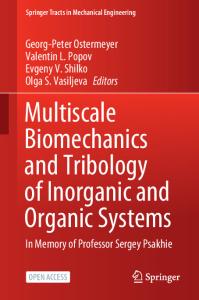Material Flow in Friction Stir Welds
- PDF / 1,207,041 Bytes
- 8 Pages / 593.972 x 792 pts Page_size
- 73 Downloads / 345 Views
TION
FRICTION stir welding (FSW) is a solid-state joining process developed in 1991.[1] In this process, a rotating non-consumable tool is plunged into the joint line, where it generates sufficient heat through frictional and mechanical deformation heating to soften the surrounding material and enable a rotational material flow (stirring) around the tool. The FSW tool is then traversed along the joint line, depositing a consolidated weld in its wake. With a conventional threaded cylindrical tool, the threads on the tool force the adjacent material downward, which causes an upward counterextrusion of material further from the tool. This complex flow of material is generally considered to occur via a combination of three incompressible flow fields—a rigid body rotation, a ring vortex flow, and a uniform translation.[2,3] The rotation of the tool gives rise to a corresponding rotational flow of material around the tool axis and the shear deformation that generates ideal simple shear textures in the deposited weld.[4] The threads produce the downward flow and upward counter-extrusion comprising the ring vortex, and translation of the tool along the joint line produces a uniform translation of material past the tool. Despite the apparent constancy of the FSW process, friction stir welds often exhibit periodic features along the weld length. The most obvious of these are the fine semicircular ridges left from the passage of the tool shoulder on the top surface of the weld, although periodic features are also present within the weld itself. RICHARD FONDA, Section Head, C.R. FENG, KEITH KNIPLING, and DAVID ROWENHORST, Scientists, are with the Naval Research Laboratory, 4555 Overlook Ave., SW, Washington, DC 20375. Contact e-mail: [email protected] ANTHONY REYNOLDS, Professor, is with the University of South Carolina, Columbia, SC. Manuscript submitted May 23, 2012. Article published online October 17, 2012 METALLURGICAL AND MATERIALS TRANSACTIONS A
Those internal features are most often observed as an ‘‘onion ring’’ structure in the transverse cross sections of weld nuggets,[5–11] although they are also evident in longitudinal and plan view cross sections.[3,6,12–15] The shape and spacing of these bands are particularly evident in dissimilar metal welds.[16,17] The spacing between adjacent bands has been shown[10,11] to typically correspond to the tool advance per revolution (APR) along the welding direction. These bands are characterized by periodic microstructural variations in both grain sizes[11,12,14,18] and fragmentation of the constituent particles.[10,11,18,19] The banding within friction stir welds has also been shown to influence the fracture behavior of some welds.[10,20,21] While the typical band spacing corresponds to the tool APR, additional periodic features occasionally develop at smaller spacings, primarily due to tool features such as flats,[22] or larger spacings, which may arise either from a periodic build up and release of material around the tool or from variations in tool/workpiece interactions caused
Data Loading...











